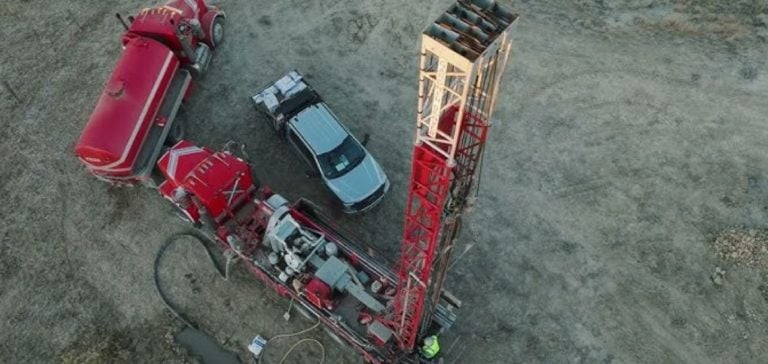The Kaycee uranium project in Wyoming’s Powder River Basin (PRB) continues to attract attention with promising drilling results.
Nuclear Fuels Inc.
recently announced an extension of mineralization in the Spur Zone, reinforcing the region’s potential for uranium mining via in situ recovery (ISR) technology. The latest results show that mineralization extends over more than 300 meters, with grades reaching 0.117% eU3O8 over a thickness of 1.5 meters, and a grade-thickness (GT) product of 0.585.
Results like these are crucial for assessing the economic viability of a large-scale ISR operation.
The Spur Zone, located to the north of the Saddle Zone, has revealed drilling with notable uranium enrichment, and the technical team is focusing on analyzing this potential connection between the two zones.
This extension could enable the company to consolidate its resources, while continuing exploration towards historically identified regional targets.
Drilling in the Saddle Zone: solid results
Drilling results in the Saddle Zone are also promising.
The latest intercepts show maximum grades of 0.233% eU3O8 over a thickness of 2.1 metres, with a GT of 1.631.
These results reinforce the hypothesis of ongoing mineralization, with prospects for expansion.
The Saddle Zone represents a strategic interest for the Kaycee project due to its deeper deposits and key geographic location, close to Wyoming’s energy infrastructure.
The next phase of drilling will focus on expanding the Saddle Zone and investigating new regional targets identified in previous campaigns.
The aim is to confirm the continuity of resources along a north-south axis, which could ultimately enable the development of an optimized ISR field, minimizing operating costs while maximizing uranium extraction.
The strategic context of the Kaycee project
The Kaycee project is distinguished by its location in the Powder River Basin, a region historically productive in uranium.
With over 42 square miles of mineral rights, covering a mineralized trend of 36 miles, the project spans three geological formations: Wasatch, Fort Union and Lance.
These formations have historically produced uranium, accessible via ISR technology, which represents a cost-effective and less invasive extraction method than traditional mining.
Wyoming, where the project is located, plays a key role in uranium production in the United States.
It benefits from a favorable regulatory framework, thanks to its status as an Agreement State with the Nuclear Regulatory Commission (NRC), which enables a smoother permitting process.
With historic production of over 250 million pounds of uranium, the region remains a strategic area for uranium mining companies, who are looking to capitalize on increasing global demand for the mineral, particularly to support the decarbonization of energy sectors.
Uranium market outlook
The global uranium market is experiencing growing momentum, driven by demand for low-carbon energy.
Nuclear power remains one of the most effective solutions for reducing greenhouse gas emissions, and projects like Kaycee are attracting particular attention from investors.
SRI strategies developed in regions like Wyoming enable efficient extraction, while limiting the environmental footprint and operating costs.
The outlook for the Kaycee project is promising, with an ongoing drilling program continuing to reveal high-quality mineralized resources.
Geological analyses and drilling results confirm the potential of ISR operations, which could ultimately feed the growing demand from energy industries seeking to integrate low-carbon solutions into their energy mix.





















